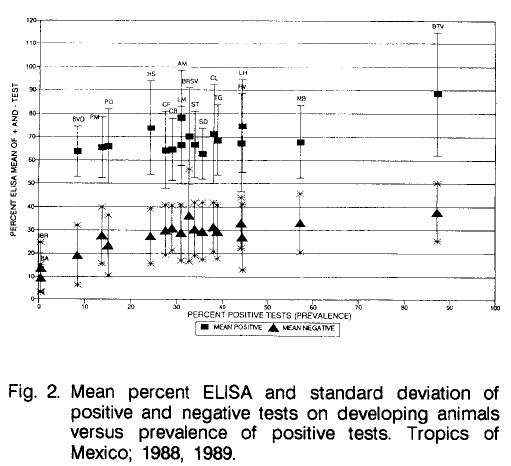A herd of cattle (Holstein-Zebu crosses) was screened every two months by ELISA during a period of two years for IgG antibodies against 19 infectious disease agents. Two hundred and ninety five sera were collected from 157 young animals (0-4 months of age), 1037 sera from 292 developing animals (4-36 months of age) and 1468 sera from 259 producing animals (> 36 months of age). The results indicate that the difference in ELISA between positive and negative tests is associated with the overall prevalence of positive tests. When the prevalence of positive tests is low the difference between positive and negative tests is greater than when the prevalence is intermediate or high. This means that ELISA, presumably other serological tests for IgG antibodies, is more reliable at low disease (antibody) prevalence. This will tend to offset the declining predictive value of positive tests at low prevalence and may contribute to the successful use of serological tests in disease eradication.
serological screening; cattie diseases; ELISA







